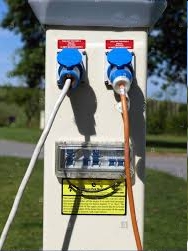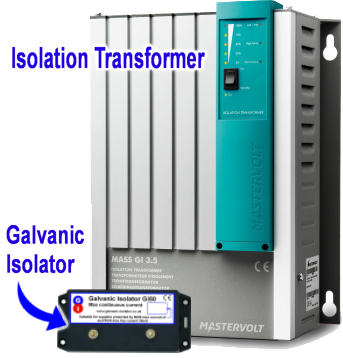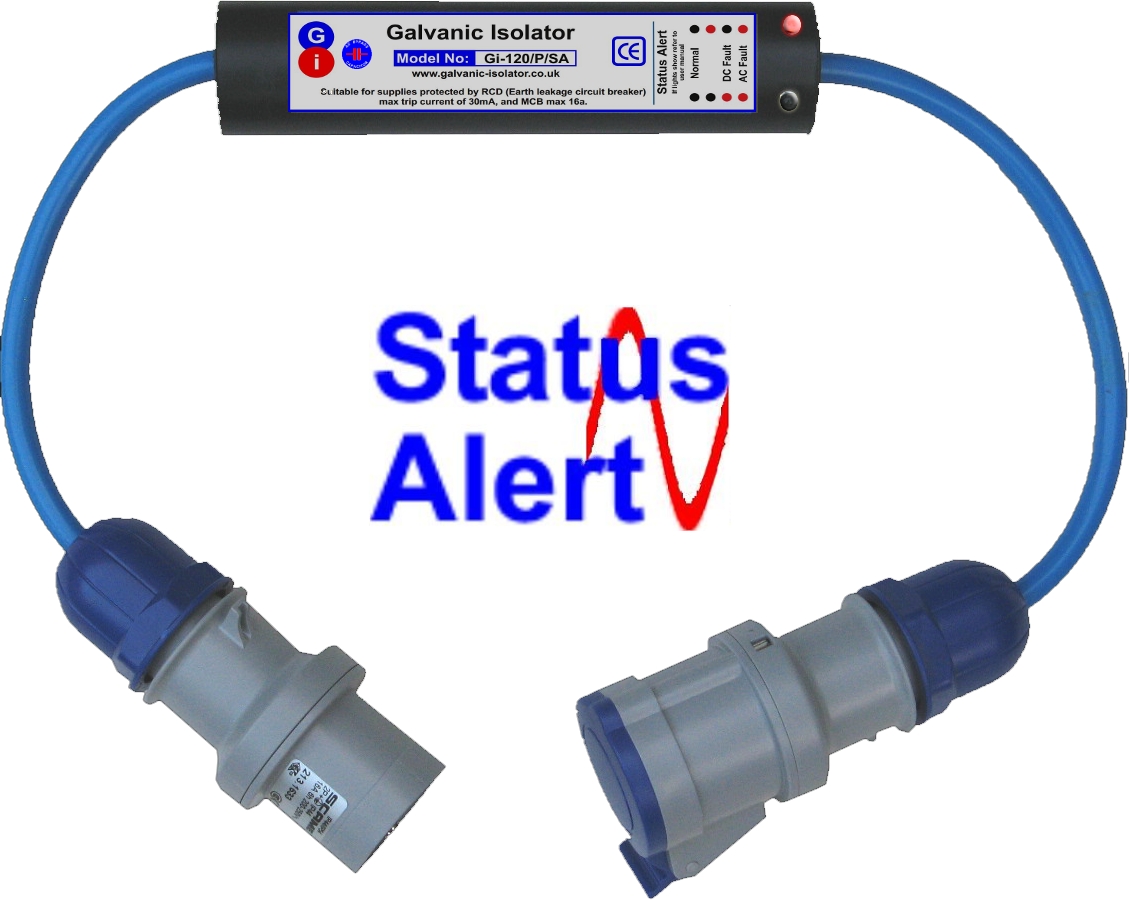If you want to prevent corrosion on your boat, Galvanic isolation is a must. Galvanic isolation means electrically isolating (disconnecting) the metalwork of a boat from a shore based electric supply. So it follows, that if you never use an electric hook up, you don’t need to worry about Galvanic isolation. You can’t get more isolated than not plugging in in the first place!

If you DO plug in, for the sake of your boat’s hull, prop etc., you’ll need to have some form of Galvanic isolation in place to stop Corrosion Currents from finding their way up your hook up cable, and dissolving the metal.
In the past, the only way of safely doing this was with an isolation transformer. An isolation transformer has two “windings” which are designed to keep the “shore electrics” and the "Boat electrics” completely separate from each other. One winding is connected to the shore electric supply, and the other winding is connected to the boat. The windings are completely separate. Isolation transformers work well, but do have some drawbacks.
• Expensive
• Bulky
• Wasteful of Power
• Needs Careful Choice
• Pro. Installation Req’d
How to choose an Isolation Transformer
An isolation transformer should be selected for the MAXIMUM load that the boat will ever demand, including the starting current of appliances like fridges etc., which is usually several times the normal running current.
Avoid the temptation to get the smallest "adequate" transformer available. Why? Because a standard 16A supply could easily have a short term current draw of 28A, requiring an isolation transformer closer to 7KW. Better sure than sorry!
Consider the location of the transformer, it’s weight, and how it might affect the boat’s trim.
Galvanic Isolators
To prevent Galvanic currents (and therefore Galvanic corrosion), it’s only necessary to isolate the EARTH conductor, as Galvanic currents don’t flow in the Live & Neutral wires.
That’s great news, as it means we can achieve excellent Galvanic isolation at a fraction of the cost just as effectively! There are other advantages too. A Galvanic isolator, sometimes known as a Marine Galvanic Isolator, can also detect Earth Leakage, which an isolation transformer cannot. That’s important, because earth leakage is often the sign of problems to come. Boats with Earth Leakage can corrode at an alarming rate, and if your boat’s affected, you NEED to know about it.
The RCD in the boat AND the RCD in the shore supply each provide protection against electric shock, so Galvanic isolator provides a safe and efficient alternative to an isolation transformer.
The Advantages of Galvanic Isolators Include:

• Excellent isolation
• Simple DIY installation
• NO power loss
• Not Load sensitive
• Inexpensive
• High Reliability

A Plug in Galvanic Isolator just plugs into either end of your hook up cable, and needs no installation whatsoever.
How to choose a Galvanic Isolator
With Plug in models, simply select your Galvanic isolator by confirming that the connectors on the isolator match the connectors on your electric hook up cable.
With Wire in models, select by confirming that the Surge Current rating is ample for your electric supply. (We recommend a Surge rating of 500Amps).
Back to < FAQ >


